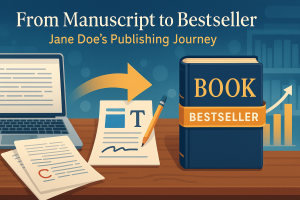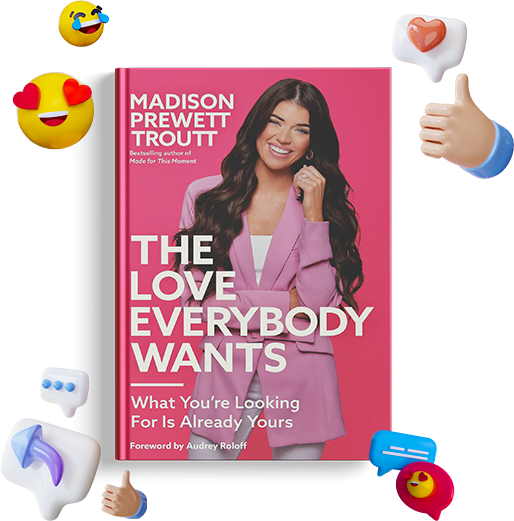Casual writing in a book is a conversational, relaxed style that makes the narrative feel natural and approachable. It mimics everyday speech, engaging readers with an informal tone that is warm, personal, and often humorous. In this comprehensive guide, we’ll explore the nuances of casual writing, discuss its benefits and challenges, and provide actionable tips for integrating a conversational style into your book. Whether you’re writing a memoir, a novel, or even a self-help book, understanding casual writing can help you connect with your audience on a deeper level.
Defining Casual Writing
Casual writing is an informal, accessible style that prioritizes clarity, authenticity, and relatability. Unlike academic or formal writing, casual writing doesn’t adhere to rigid grammatical structures or complex vocabulary. Instead, it mimics the spontaneity of everyday conversation. This approach is particularly effective when you want to share personal stories, opinions, or experiences in a way that feels genuine and engaging.
At its core, casual writing is about connection. When you write casually, you invite your readers into your world, as if you were having a conversation over coffee. The language is simple, the tone is friendly, and the flow is natural, making it easier for readers to absorb and relate to your message.
The Origins of Casual Writing
Casual writing has deep roots in oral storytelling traditions. Long before the advent of written literature, stories were passed down verbally from one generation to the next. These narratives were rich in colloquial language, idioms, and humor—elements that are key to casual writing today.
In modern literature, the shift towards casual writing has been influenced by the rise of personal memoirs, blogs, and social media. Authors began experimenting with more conversational tones to break the barrier between writer and reader, creating an intimate reading experience. This evolution reflects a broader cultural shift toward authenticity and relatability in storytelling.
Characteristics of Casual Writing
Casual writing is marked by several distinctive features that set it apart from formal prose. Here are some key characteristics:
Informal Language
Casual writing uses everyday language. Contractions, slang, and idiomatic expressions are common, making the text sound like natural speech. Phrases such as “you know,” “kind of,” and “a lot of” add to the informal tone.
Personal Tone
A casual style often includes personal anecdotes, opinions, and direct addresses to the reader. This personal touch helps build a connection, as if the writer is speaking directly to a friend.
Conversational Rhythm
The rhythm of casual writing is similar to spoken conversation. Sentences may be shorter and more fragmented, mimicking the natural pauses and rhythms of speech.
Humor and Wit
Humor is a natural component of casual writing. Light-hearted jokes, playful language, and a touch of self-deprecation can make the reading experience enjoyable and relatable.
Simplicity and Clarity
Rather than complex sentence structures and technical jargon, casual writing emphasizes simplicity and clarity. The goal is to communicate ideas in a straightforward manner without overwhelming the reader.
Benefits of Using Casual Writing in a Book
Increased Reader Engagement
A casual tone can make your book more accessible and enjoyable. Readers are more likely to stick with a narrative that feels like a friendly conversation rather than a formal lecture. This increased engagement can translate into higher reader retention and word-of-mouth promotion.
Enhanced Authenticity
Casual writing allows you to be yourself. It strips away the pretentiousness often associated with formal prose, letting your unique voice shine through. This authenticity helps build trust and rapport with your audience.
Broader Appeal
Books written in a casual style can appeal to a wide range of readers, from young adults to older audiences. The approachable language makes the content less intimidating, inviting more readers to explore your work.
Improved Accessibility
Casual writing is easier to understand, especially for non-native speakers or those who prefer straightforward language. This accessibility is crucial if you aim to reach a global audience.
Flexibility in Genre
Casual writing works well across various genres, from memoirs and self-help books to fiction and narrative nonfiction. It allows you to blend humor, emotion, and storytelling seamlessly.
Challenges of a Casual Writing Style
While casual writing offers numerous benefits, it also comes with challenges:
Risk of Over-Familiarity
Casual writing must strike a balance. Too much informality can sometimes come across as unprofessional or overly familiar, potentially alienating readers who prefer a more polished narrative.
Consistency Issues
Maintaining a consistent tone throughout a lengthy book can be challenging. Casual language might fluctuate, leading to sections that feel disjointed or inconsistent.
Misinterpretation
Informal language, including slang and idiomatic expressions, may not translate well for all readers or cultures. It’s important to ensure that your casual style does not lead to misunderstandings.
Balancing Depth and Simplicity
Casual writing is meant to be accessible, but it shouldn’t oversimplify complex ideas. Finding the balance between simplicity and depth is key to conveying nuanced messages effectively.
When to Use Casual Writing in Your Book
Choosing a casual writing style depends on several factors, including your audience, genre, and personal voice. Here are some scenarios when a casual style is particularly effective:
Personal Memoirs and Autobiographies
When writing about your life experiences, a casual tone can make the narrative more relatable. Sharing personal stories with a conversational voice helps readers connect with your journey on an emotional level.
Self-Help and Inspirational Books
In self-help genres, a friendly and approachable style encourages readers to absorb advice and insights without feeling lectured. Casual language makes the content feel supportive rather than didactic.
Young Adult Fiction
Young adult readers often prefer a more conversational tone. Casual writing in YA fiction can capture the vernacular and cultural nuances of the target audience, making the story feel authentic.
Narrative Nonfiction
When recounting real events in a narrative nonfiction book, a casual style can bring warmth and immediacy to the storytelling, making historical or factual content more engaging.
How to Develop a Casual Writing Voice
Write Like You Speak
One of the most effective ways to cultivate a casual voice is to write as if you’re having a conversation with a friend. Don’t be afraid to use contractions, colloquial expressions, or even humor. The key is to remain natural and authentic.
Read Widely
Examine books and articles known for their casual tone. Notice how the authors construct sentences, use dialogue, and infuse personality into their narratives. This practice can help you understand the rhythm and flow of casual writing.
Practice Freewriting
Set aside time for freewriting sessions where you jot down thoughts without worrying about grammar or structure. This practice helps you capture your natural voice and can reveal unique expressions that define your style.
Get Feedback
Share your writing with trusted friends or writing groups and ask for honest feedback on your tone. Constructive criticism can guide you in refining your style until it feels both natural and effective.
Experiment with Tone
Don’t hesitate to experiment. Try writing the same piece in both formal and casual styles to see which one resonates more with your intended audience. The process of iteration is essential for developing a distinctive voice.
Techniques and Tips for Casual Writing
Use Active Voice
Active voice tends to be more direct and engaging. Instead of writing, “The decision was made by the team,” write, “The team decided.” Active constructions create a sense of immediacy and energy.
Incorporate Dialogue
Adding dialogue can break up long paragraphs and bring a scene to life. Even if the conversation is paraphrased, it makes the narrative more dynamic and relatable.
Vary Sentence Length
Mixing short, punchy sentences with longer, flowing ones can create a natural, conversational rhythm. This variation keeps readers interested and helps convey emotions more effectively.
Be Honest and Vulnerable
Casual writing thrives on authenticity. Don’t shy away from sharing your true thoughts and feelings. Vulnerability in writing builds trust with your audience and makes your narrative more compelling.
Avoid Overly Technical Jargon
While certain topics may require specialized vocabulary, aim to explain complex ideas in simple terms. This makes your book accessible to a broader audience.
Infuse Humor and Anecdotes
Light-hearted moments and personal anecdotes can enrich your narrative. Humor not only entertains but also humanizes the text, making it easier for readers to connect with your story.
Balancing Casual with Professionalism
Even though casual writing is relaxed, maintaining a level of professionalism is crucial, especially if you plan to publish your book through traditional channels. Here are some strategies:
Know Your Audience
Understand who your readers are and adjust your tone accordingly. A memoir aimed at a broad audience might be more casual than a technical guide, which needs clarity and precision.
Edit Rigorously
Casual writing does not mean careless writing. Ensure your manuscript is well-edited, with a consistent tone, free of distracting errors, and polished enough for publication. Professional editing can help bridge the gap between informal style and market readiness.
Maintain Structure
A clear, logical structure enhances readability. Even if the tone is conversational, organizing your content with clear headings, subheadings, and transitions will keep your narrative cohesive.
Respect Boundaries
While being personal, avoid oversharing or including unnecessary details that might detract from your main message. Balance is key: let your personality shine through without compromising the story’s focus.
Formatting and Structuring Your Casual Narrative
The way you structure your book can significantly impact how your casual writing is received. Here are some formatting tips:
Use Clear Headers and Subheaders
Break your content into manageable sections with descriptive headers. This organization helps readers navigate your book and understand the progression of your narrative.
Incorporate Visual Breaks
Use paragraphs, bullet points, and even images to create visual breaks in the text. This enhances readability, especially in a casual style where the goal is to invite readers into your world without overwhelming them.
Consistent Styling
Whether it’s font choice, color schemes, or chapter formatting, maintain consistency throughout your book. This consistency reinforces your brand and makes your book look professionally put together.
Case Studies: Successful Casual Writing in Books
Many best-selling books have employed a casual writing style to great success. Let’s explore a few examples and what makes them effective:
Memoirs That Connect
Memoirs like Educated by Tara Westover or The Glass Castle by Jeannette Walls use casual language to draw readers into deeply personal stories. Their conversational tone makes complex life experiences feel relatable and engaging.
Fiction with a Conversational Edge
Novels that break traditional narrative molds often incorporate casual dialogue and narrative style. Authors such as Nick Hornby in High Fidelity capture everyday language and humor, making their stories feel both authentic and entertaining.
Nonfiction That Reads Like a Conversation
Books on self-improvement or creative writing often adopt a casual tone to break down complex ideas. This approach demystifies abstract concepts and encourages readers to apply insights directly to their lives.
These examples demonstrate that casual writing, when done well, can elevate a story by making it accessible, engaging, and memorable.
Publishing Options for Casual Writers
Once your manuscript is ready, deciding how to publish becomes the next critical step. Your approach may vary based on your goals, target audience, and resources.
Traditional Publishing
Traditional publishing involves submitting your manuscript to established publishing houses. These companies typically handle editing, design, and distribution, but the process can be lengthy and competitive. If you’re seeking professional guidance, consider exploring reputable Book Publishing Services that can help position your work in the market.
Independent Presses
Smaller, independent presses may be more open to unique voices and experimental styles. They often provide a more personalized publishing experience while still offering professional editing and design services.
Self-Publishing
Self-publishing gives you full control over every aspect of your book—from cover design to marketing. This path can be particularly appealing for authors who favor a casual, unfiltered narrative. Many authors successfully self-publish a book and become a best-selling author by leveraging digital platforms and effective marketing strategies. For those concerned about costs, understanding the amazon self-publishing cost can help you budget wisely.
Marketing Your Casual Book
Even the best book won’t find an audience without effective marketing. Here are some strategies tailored for books with a casual style:
Building an Author Platform
Create a website or blog where you share your writing journey, insights, and excerpts from your book. This platform serves as a hub for your personal brand and helps build a community around your work.
Social Media Engagement
Use social media platforms to connect with readers and share behind-the-scenes content. Authentic interactions, reflective of your casual tone, can forge stronger bonds with your audience.
Networking with the Right Publishing Partner
Whether you choose traditional or self-publishing, aligning with the right publishing partner can amplify your reach. Look for partners who appreciate your casual style and can help position your book effectively.
Innovative Marketing Tactics
Consider creative strategies like virtual book tours, interactive Q&A sessions, and leveraging influencers who resonate with your narrative style. Learning how to market your own book can provide valuable tactics tailored to your unique voice.
Understanding the Financial Side of Casual Writing
While writing a book is a labor of love, understanding the financial landscape is crucial. Many authors wonder, “how much does professional authors make?” This information can help you set realistic expectations regarding advances, royalties, and sales projections. Researching these figures can also guide your decisions on whether to pursue traditional publishing or self-publishing routes.
Conclusion
Casual writing in a book transforms your personal experiences into a compelling, relatable narrative. By adopting an informal tone that mirrors everyday conversation, you invite readers into your world, making your story accessible and engaging. Whether you’re writing a memoir, fiction, or narrative nonfiction, a casual style can set your work apart and foster a deep connection with your audience.
The journey from brainstorming to the final published product involves understanding your audience, honing your voice, and navigating the complex world of publishing. Along the way, you’ll discover that the relaxed, honest approach of casual writing not only makes the process enjoyable but also enhances the impact of your story.
Remember, every word you write is a step toward preserving your legacy and sharing your unique perspective with the world. Embrace the imperfections, let your personality shine through, and write as if you’re speaking to a close friend. That’s the essence of casual writing.
For additional support on the publishing process, consider exploring trusted Book Publishing Services to guide your journey. If you need further insights into finding a right publishing partner, or learning how to market your own book, there are many resources available. To better understand your financial prospects, read up on pros and cons for self-publishing with Amazon and learn how much does professional authors make. Additionally, if you lean toward self-publishing, know the amazon book publishing process and consider how many pages should a book be to better plan your project.
Casual writing is more than just a stylistic choice—it’s a way to tell your story authentically. By embracing this approach, you not only make your work accessible but also create a personal connection with your readers. Start your journey today, and let your unique voice shine through every page.









